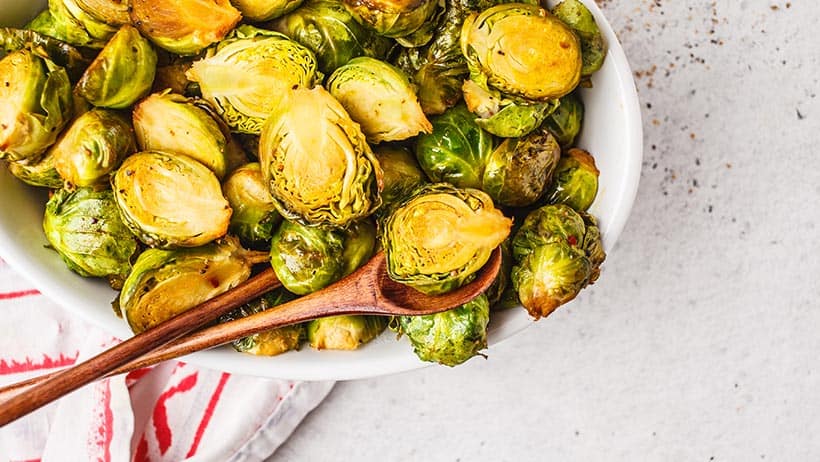
Many resources discuss omega-3 fatty acids — widely touted as vital for a healthy heart — as if they only exist in fish and fish oil supplements. Thankfully for vegetarians, that’s not true. You can find omega-3 fatty acids in a variety of vegetarian foods, which also provide many benefits beyond improved heart health.
Read on to learn more about omega-3 fatty acids, the benefits they provide, and the best vegetarian sources of this important nutrient.
What Are Omega-3 Fatty Acids?
Omega-3 and omega-6 fatty acids are both polyunsaturated fatty acids (PUFAs) the human body requires, but can’t produce on its own. Researchers believe our bodies need nearly equal amounts of omega-6 and omega-3 fatty acids for optimal health. The ideal omega-6/omega-3 ratio falls somewhere between 4-1 and 1-4. Unfortunately, most Americans have a ratio closer to 20-1 — an imbalance that can lead to obesity and chronic health problems. So what’s causing this imbalance? Many suspect the contemporary Western diet. Researchers believe that most people living in pre-industrial societies had a healthy omega-6/omega-3 ratio. Changes in the food supply and eating habits then sparked changes in this ratio. While researchers don’t fully understand the relationship between omega-3, omega-6, and other fatty acids, most agree that people fare better when they avoid trans fats and consume only small amounts of saturated fats. This requires limiting consumption of highly processed foods, fried foods, butter, and red meats.
What Are the Benefits of Omega-3 Fatty Acids?
Research suggests that people who increase their consumption of omega-3 fatty acids may enjoy many health benefits. For example, researchers found an increased omega 3 intake can potentially support the following benefits:
- Reduced risk of dying from heart problems
- Enhanced protection against Alzheimer’s disease
- Reduced severity of some psychiatric disorder symptoms
- Improved bone health
- Reduced liver fat
- Increased weight loss
- Improved breathing and reduced asthma symptoms
- Enhanced treatment of rheumatoid arthritis
How Much Should I Consume?
Determining your ideal daily intake of omega-3 fatty acids can prove challenging because the U.S. Department of Agriculture doesn’t provide a recommended daily allowance (RDA) for this nutrient. The U.S. government did, however, establish omega-3 fatty acid adequate intake (AI) amounts — quantities assumed to provide nutritional adequacy. Government researchers provide an AI amount when they lack enough data to confidently suggest the RDA. The RDA for omega-3 fatty acids may end up much higher than the current AI amounts, which recommend:
- Adult Men: 1.6 grams per day
- Adult Women: 1.1 grams per day
- Pregnant Women: 1.4 grams per day
- Lactating Women: 1.3 grams per day
One reason RDAs don’t yet exist for omega-3 fatty acids is that researchers don’t know if the total amount of this nutrient in a person’s body is as important as the omega-6/omega-3 ratio. If increasing omega-3 fatty acid levels can improve health primarily because of the change in the omega-6/omega-3 ratio, then the same effect potentially could occur by lowering omega-6 fatty acid levels. Moreover, researchers don’t fully understand how various types of omega-3 fatty acids interact and what amount of each humans need for optimal health. They did, however, identify three essential types of omega-3 fatty acids for human health: Alpha-Linolenic Acid (ALA) Eicosapentaenoic Acid (EPA) Docosahexaenoic Acid (DHA) ALA is the version most commonly found in plant-based foods. Because the body must work harder to use ALA than EPA or DHA, vegetarians likely should consume higher levels of omega-3 fatty acids to compensate. To be on the safe side, try to exceed the AI for omega-3 fatty acids while simultaneously reducing your omega-6 intake.
6 Omega-3-Rich Vegetarian Foods
1. Ghee
Ghee, also known as clarified butter, is made by melting butter and carefully removing the milk fat solids until only the pure oil remains. On its own, ghee is a great source of omega-3 and omega-9 fatty acids, as well as vitamins A, D, E, and K. Ghee also contains significant amounts of a special fatty acid known as CLA, or conjugated linoleic acid, which promotes weight loss and healthy circulation.
2. Brussels Sprouts
Brussels sprouts provide an extremely healthy source of omega-3 fatty acids. This low-calorie food boasts a high fiber content, multiple vitamins, and 135 milligrams of ALA in a half-cup serving.
3. Chia Seeds
Chia seeds contain the most omega-3 fatty acids of all plant sources. They can cause digestive issues if eaten without first pre-soaking them, so avoid eating them raw. Try chia seed pudding — a popular chia dish — for breakfast or dessert.
4. Hemp Seeds
Hemp seeds and hemp seed oil contain a high amount of omega-3 fatty acids in addition to high levels of protein and iron. For these reasons, many vegetarians try to find ways to fit hemp seeds into their diet. Consider sprinkling them on top of your vegetable dishes and salads to start.
5. Flaxseeds
Flaxseeds and flaxseed oil also provide high levels of omega-3 fatty acids — a potential reason why a study found increased flax intake lowers cholesterol. Flaxseed oil supplements offer a vegetarian counterpart to fish oil supplements. You can, of course, enjoy the omega-3 fatty acids from flaxseeds without supplementation by simply incorporating them into your diet. Ground flaxseed is easier to digest and provides more nutritional benefit than whole flaxseeds. Sprinkle ground flaxseed on top of cereal and oatmeal or add it to recipes when baking.
6. Walnuts
A one-ounce serving of walnuts contains 2.5 grams of ALA — and walnuts represent one of the only tree nuts to contain omega-3 fatty acids. Walnuts make a satisfying snack you can eat on their own or paired with fruit or cheese. You also can toss them into salads or vegetable dishes. To determine the omega-3 fatty acid content of other foods, check out the SELFNutritionData database. This resource typically provides a higher level of detail than other nutrition databases.